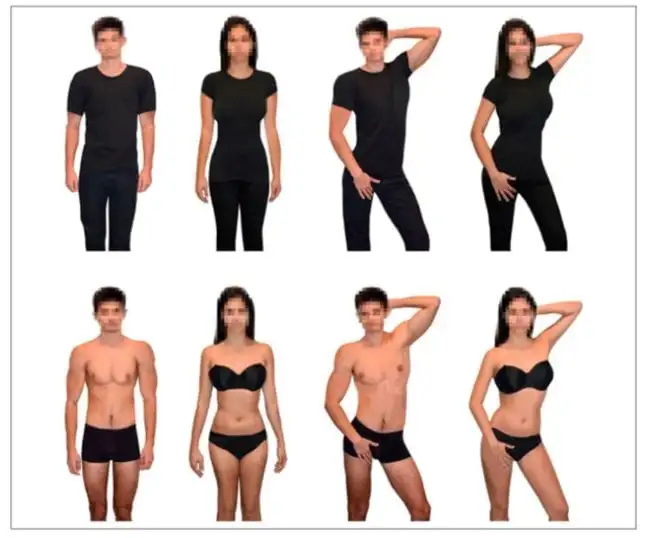Nudity has nothing to do with objectification, study reveals

The researchers were mostly based in Belgium (Pexels)
The researchers were mostly based in Belgium (Pexels)
Seeing bare skin doesn’t make you objectify people, a new study has found.
The research, published in the Personality and Social Psychology Bulletin, shows that nudity doesn’t make your brain see another person as a collection of parts, but sexually suggestive postures absolutely do.
Over the past few months, Tom Daley, Adam Rippon and Queer Eye‘s Antoni Porowski have set the internet alight with explicit pictures of themselves.

Antoni went viral with his contrapposto pose (twitter/antoni)
But it seems that no-one viewing these thirst-inducing images was objectifying these famous men for their bare bodies – but might have been seeing them as a literal collection of parts because of their poses.
A team of researchers who mainly come from the Université Libre de Bruxelles in Belgium showed subjects of different genders pictures of men and women with blurred faces who were either wearing black trousers and tops or swimwear.
The results showed no discernible difference in participants’ brainwaves which indicate objectification when shown fully clothed or half-naked people.

The images shown to the study’s participants (Revealing Clothing Does Not Make the Object: ERP Evidences That Cognitive Objectification is Driven by Posture Suggestiveness, Not by Revealing Clothing/
Personality and Social Psychology Bulletin)
They were more aroused when looking at the semi-nude photos, but did not see the models as any less than humans, rather than objects to leer at.
As the researchers wrote, “skin-to-clothing ratio was not associated with cognitive objectification.”
However, when subjects were presented with photos of the models making a suggestive pose – putting one hand near their crotch and the other behind their head – the participants mentally objectified them.
The researchers said: “We found that posture suggestiveness was the key driver of cognitive objectification.”

Nudity can arouse people, but it doesn’t make you objectify them (Pexels)
Earlier this year, it came to light that there was a trend for film posters to feature headless women.
Dirty Grandpa, Staten Island Summer, Hall Pass, Sex Drive and Hot Tub Time Machine have all been guilty of playing into this trope, which dehumanises women.
Even 1984’s Bachelor Party, which stars Tom Hanks as Rick, a nice guy who gets dragged on a wild night-out with his friends, fits the bill, showing that the phenomenon is nothing new.

A pose is necessary if you want to be objectified (Pexels)
The plots for these sorts of films typically revolve around coming-of-age, sex, out-of-control parties and/or the protagonists getting into some kind of debauchery-based trouble.
But the Headless Women trope is also a technique used by many horror posters too, with Buffy the Vampire Slayer, I Spit On Your Grave, Lesbian Vampire Killers and Rings being just a few notable examples.
Not only do these types of posters strip the women of their identities and forcibly subject to the male gaze, they also insidiously suggest that opinions, feelings and personalities of women don’t exist.

